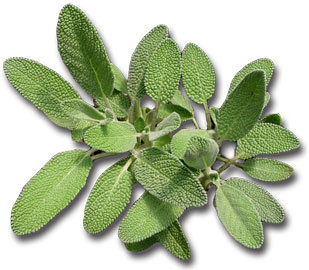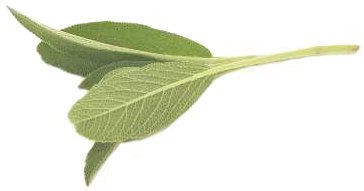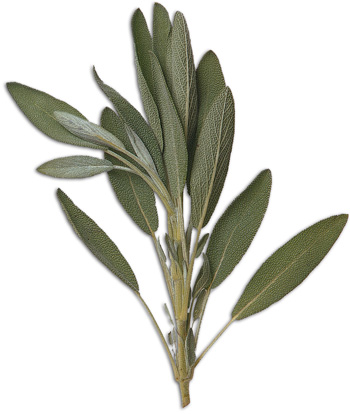

Sage

Salvia. (From Latin name used by Pliny, derived from Latin salvare, to save or heal, alluding to the supposed medicinal properties of certain species.) SAGE. Labiatae. Some 900 or more species of perennial or, occasionally, annual or biennial herbs, shrubs or subshrubs. Stem erect or ascending, glabrous to glandular and/or variously pubescent. Leaves sessile or petiolate, opposite, simple or lyrate or pinnatisect. Flowers in 2-40-flowered, approximate or distant verticillasters, these disposed in terminal or axillary racemes, spikes, panicles, or rarely, cymes; pedicels erect to spreading; bracteoles and non-foliaceous bracts usually present; calyx 2-lipped, tubular or ovoid to bell-shaped or funnel-shaped, often dilated or membranous in fruit, lips eventually convergent, upper lip truncate to obsoletely or distinctly 3-toothed, teeth unequal, lower lip 2-toothed, teeth equal; corolla 2-lipped, tube plane or curved, included or exserted, often invaginate or distended, occasionally annulate or squamate, smooth to papillose or rugose, upper lip hooded, erect, plane or falcate, entire to emarginate or bifid, lower lip spreading, 3-lobed, lateral lobes reduced, middle lobe often emarginate; stamens 2, included or exserted, staminodes 2 or absent; style 2-lobed or 2-branched, glabrous or pubescent. Fruit of four nutlets, globose to ovoid and more or less trigonous, often mucilaginous, smooth. Cosmopolitan. CultivationOf the 900 or so species of Salvia, a large percentage are the most ornamental flowering plants, providing a long lasting display as shrubs, herbaceous perennials, biennials and annuals. Several species have deliciously aromatic foliage: Salvia officinalis (sage), Salvia sclarea and Salvia viridis are in widespread cultivation for medicinal uses and as culinary herbs. Salvia hispanicais widely cultivated for the tonic (chia) obtained from the seeds, which exude a jelly used to flavour fruit juices; other species serving a similar function include Salvia columbariae. A fragrant tea called fascomiglia is made by infusing the leaves of Salvia pomifera and Salvia fruticosa. A number of species are annuals or treated as annuals in cool temperate gardens, including the strongly aromatic Salvia viridis which provides blooms for cutting to use fresh or air dried. Those shrubby species that can be cultivated outside and will survive temperatures down to -10ºC unharmed include Salvia officinalis and Salvia pomifera. 
The herbaceous species are more prone to die back from excess moisture remaining around the woody tuberous or rhizomatous root system during the dormant period than from low temperatures. These species therefore prefer well-drained situations on lighter, sandier soils which benefit from a mulch of organic matter each season during spring. Biennials can be sown in situ outside with a view to their eventual size at flowering, some e.g. Salvia sclarea form rosettes with very large usually felted leaves which require a large area for their successful growth. Annuals can also be sown outside in situ in late spring after danger of frost damage has diminished. Tender glasshouse species can be grown on rapidly into large pots. They are not particular as to soil type but grown best in soils rich in inorganic matter which are more water retentive. During spring and summer they may be watered plentifully, this being reduced from autumn onwards and sparingly during winter. All shrubby and most herbaceous salvias will be propagated easily from cuttings of softwood taken at any stage of the growing season, many will root within a week if placed in a warm, humid atmosphere in a well-drained sandy rooting medium. All salvias can be grown from seed sown under glass in spring. This genus may also be prone to attack by glasshouse red spider mites, whitefly and aphids.  Salvia columbariae
Salvia columbariae
Perennial or annual herb to 70cm. Stems simple or branched, glabrous to minutely pubescent. leaves to 7cm, petiolate, pinnate-pinnatifid, rugose and pubescent to tomentose, segments irregular, oblong, apex obtuse, margin subentire to toothed; petioles to 5cm. Verticillasters in many-flowered, glomerulate heads to 3cm; bracts imbricate, ovate to orbicular, apex subulate to narrowly acute and spiny, margin ciliate; calyx to 6mm, interior glabrous, upper lip arched, teeth bristly; corolla to 13mm, blue, upper lip emarginate to bifid, middle lobe of lower lip bifid, ovate. Fruit to 2mm. Summer. SW US. Z7. Salvia fruticosaShrub to 1m. Stems much-branched, glandular-pubescent to tomentose. Leaves to 5 x 2cm, petiolate, simple or pinnatifid, ovate or lanceolate to oblong, somewhat rugose, white-tomentose beneath, terminal segment elliptic to oblong, lateral segment 1-2 pairs, ovate to deltoid, base cordate or truncate and auriculate, margin notched; petioles to 3cm. Verticillasters 2-8-flowered, approximate or distant, in panicles or racemes to 20cm; pedicels to 2mm; bracts to 7 x 3mm, deciduous, ovate, apex narrowly acute, bracteoles deciduous, membranous; calyx to 9mm, tubular to bell-shaped, glandular-pubescent, lips connate in fruit, teeth of lower lip subequal, deltoid, apex acute; corolla to 25mm, pink to mauve or, occasionally white, tube plane, interior annular-pubescent, upper lip plane. Fruit to 3mm, globose to ovoid. Spring-summer. Canary Islands and N Africa to Middle East. Z9. Salvia hispanicaAnnual herb to 1m. Stems erect or ascending, branched, pubescent. Leaves to 8 x 5cm, petiolate, simple, ovate or lanceolate to oblong, apex acute or narrowly acute, base attenuate to obtuse, margin notched, glabrous or pubescent; petioles to 3cm. Verticillasters 6-10-flowered, approximate, in dense, terminal, cylindric to spicate racemes to 15cm; bracts to 8mm, ovate, apex acute; calyx to 7mm, tubular to bell-shaped, dilated in fruit and gibbous at base, pubescent, upper lip keeled; corolla blue, tube to 6mm, upper lip to 3mm, lower lip to 5mm. Fruit to 2mm, ellipsoid. Summer. C Mexico, widely naturalised. Note: many plants cultivated as Salvia hispanica are in fact Salvia lavandulifolia. Z9. Salvia officinalisCOMMON SAGE. Perennial shrub to 80cm. Stems erect, much-branched, 4-angled, white-pubescent or white-tomentose. Leaves to 55 x 15mm, petiolate, simple, oblong to elliptic, base obtuse or attenuate and occasionally, lobulate, margin entire, rugose, white-pubescent, especially beneath; petioles to 2.5cm. Verticillasters 4-20-flowered, approximate, in more or less simple racemes; pedicels to 3mm; bracts ovate, apex narrowly acute, membranous; calyx to 14mm, bell-shaped, glandular-punctate and pubescent, apex of teeth subulate to narrowly acute; corolla white or pink to violet or purple, tube to 15mm, upper lip to 1cm. Fruit to 2 x 1mm, grey. Summer. Mediterranean (Iberia and Balkans) and N Africa; naturalised S Europe; widespread in cultivation. ‘Albiflora’: leaves up to four times longer than wide; flowers white. ‘Aurea’: compact and dwarf, to 30cm; leaves golden. ‘Berggarten’: habit broad and low; leaves very wide; flowers blue. ‘Compacta’: dwarf, to 20cm. ‘Crispa’: leaves variegated, margin crisped. ‘Grete Stolze’: leaves pointed, pale grey; flowers mauve-blue. ‘Icterina’: leaves golden-green. ‘Latifolia’: leaves up to two times longer than wide. ‘Milleri’: leaves red, maculate. ‘Purpurascens’: leaves red-purple. ‘Rubriflora’: leaves up to four times longer than wide. Flowers red. ‘Salicifolia’: leave up to seven times longer than wide. ‘Sturnina’: leaves white-green. ‘Tenuior’: leaves up to four times longer than wide; flowers blue. ‘Tricolor’: leaves grey-green zoned yellow, and pink to red. Z5. Salvia pomifera
Much-branched, canescent shrub to 1m. Leaves to 4cm, simple, petiolate, densely canescent when young, lanceolate to lanceolate-ovate, apex obtuse, margins crenate-undulate, surface rugose. Verticillasters 2-4-flowered; bracts green, ovate, large, exceeding the calyx, apex acute, caducous; calyx to 15mm, strongly accrescent, often red-purple with sessile glands and eglandular hairs; corolla to 35mm, violet blue, lower lip mid-blue. Greece, Crete. This species was called Salvia pomifera (i.e. bearing apples) owing to the fleshy galls which are produced by gall wasps invading the young branches; these galls are made into a succulent sweetmeat in various parts of Greece and Crete by crystallising them in sugar. Z8. Salvia sclereaCLARY. perennial or biennial herb to 1m. Stems erect, much-branched, 4-angled, rough, glandular-pubescent. Leaves to 23 x 12cm, sessile to petiolate, simple, ovate to oblong, base perfoliate or cordate, margin notched to erose, rugose; petioles to 9mm, tomentose. Verticillasters 2-6-flowered, distant, in many-flowered panicles or racemes; pedicels to 3mm; bracts to 25 x 25mm, concave, ovate, apex narrowly acute, margin ciliate, membranous, white or pink to mauve or lilac; calyx to 1cm, ovoid to bell-shaped, dilated in fruit, rough, glandular-punctate, pubescent, upper lip concave, mucronately 3-toothed, grooved, apex of teeth of lower lip narrowly acute or aristate to spiny; corolla to 3cm, cream and lilac to pink or blue, tube included, distended above, squamose, upper lip constricted and falcate. Fruit to 3 x 2mm. Spring-summer. Europe to C Asia. ‘Turkestanica’: stems pink; leaves petiolate; flowers in spikes to 75mm, white, flecked pink. Z5. Salvia viridisAnnual or biennial herb to 45cm. Stems erect, simple or branched, glandular-pubescent, and usually violet-tufted above. Leaves to 50 x 25mm, petiolate, simple, ovate to oblong, apex obtuse, base obtuse or cordate to cuneate, margin somewhat notched, pubescent; petioles to 5cm. Verticilasters 4-8-flowered, approximate or distant, in simple spicate racemes; pedicels to 3mm, flattened; bracts to 1 x 1cm, persistent, ovate to rhomboid, apex acute, bracteoles to 15 x 1mm, linear, apex subulate; calyx to 1cm, dilated and deflexed in fruit, ribbed, 13-veined, glandular-pubescent, green or purple, upper lip truncate, teeth of lower lip to 3mm, lanceolate, apex subulate to narrowly acute; corolla to 15mm, white to lilac, violet, or purple, tube plane, exserted, exterior pubescent, upper lip falcate. Fruit to 3 x 2mm, ellipsoid, brown. Summer. Mediterranean. ‘Alba’: bracts white. ‘Bluebeard’: bracts pale violet-blue with darker veins. ‘Oxford Blue’: bracts broad and blue. ‘Purpurea’: bracts rose-red to purple. ‘Rose Bouquet’: bracts pink. ‘Violacea’: bracts violet with darker veins. ‘Vulgaris’: bracts violet.
|
Home
Grow Nuts
Grow Fruit
Grow Vegetables
Cyberian Index
If you like this website and want one of your own contact
Cyberian All information correct at
time of publication and open to updates as necessary. No part of this website,
or its vectors, may be produced in any shape or form, using any type or design
of medium, system, equipment or otherwise without the prior written consensual
notice of the Cyberian. Any breach of these requirements will result in the
appropriate action. If in doubt, e-mail contact is recommended.
Some components of this website were obtained as open-source software and are
used in the same non-profit manner on this website.